Ranked Choice Voting
A simple tweak to our election system could solve
some of America’s most daunting political challenges
Ranked Choice Voting, Explained
In our current election system, voters are often forced to choose between the lesser of two evils. Over and over and over again. Americans have limited choices, and third-party candidates never seem to have a real shot at winning elections.
Ranked Choice Voting (RCV), also known as instant-runoff voting, is an electoral system where voters rank candidates from favorite to least favorite on the ballot. In RCV elections, you have the freedom to vote for your favorite candidates without fear of wasting your vote. If your top candidate does not win, your vote can still count toward your second preference.
The Benefits of Ranked Choice Voting
Removes spoiler effect
Voters get better choices
Winners get majority support of voters
Campaigns become more positive and civil
Increases accountability
Reduces election costs
We’re bringing Ranked Choice Voting to cities and states all across America.
Will you join the movement?
How does Ranked Choice Voting Work?
In a Ranked Choice Voting election, voters have the option to rank candidates in order of choice – first choice, second choice, and so on. If a candidate wins a majority of first-choice votes, they win – just like today.
But if nobody receives a majority of first choices, the candidate with the fewest votes is eliminated. The voters who ranked that candidate first then have their vote instantly go to their second choice. This process, which is called instant runoff, continues until there is a majority winner.
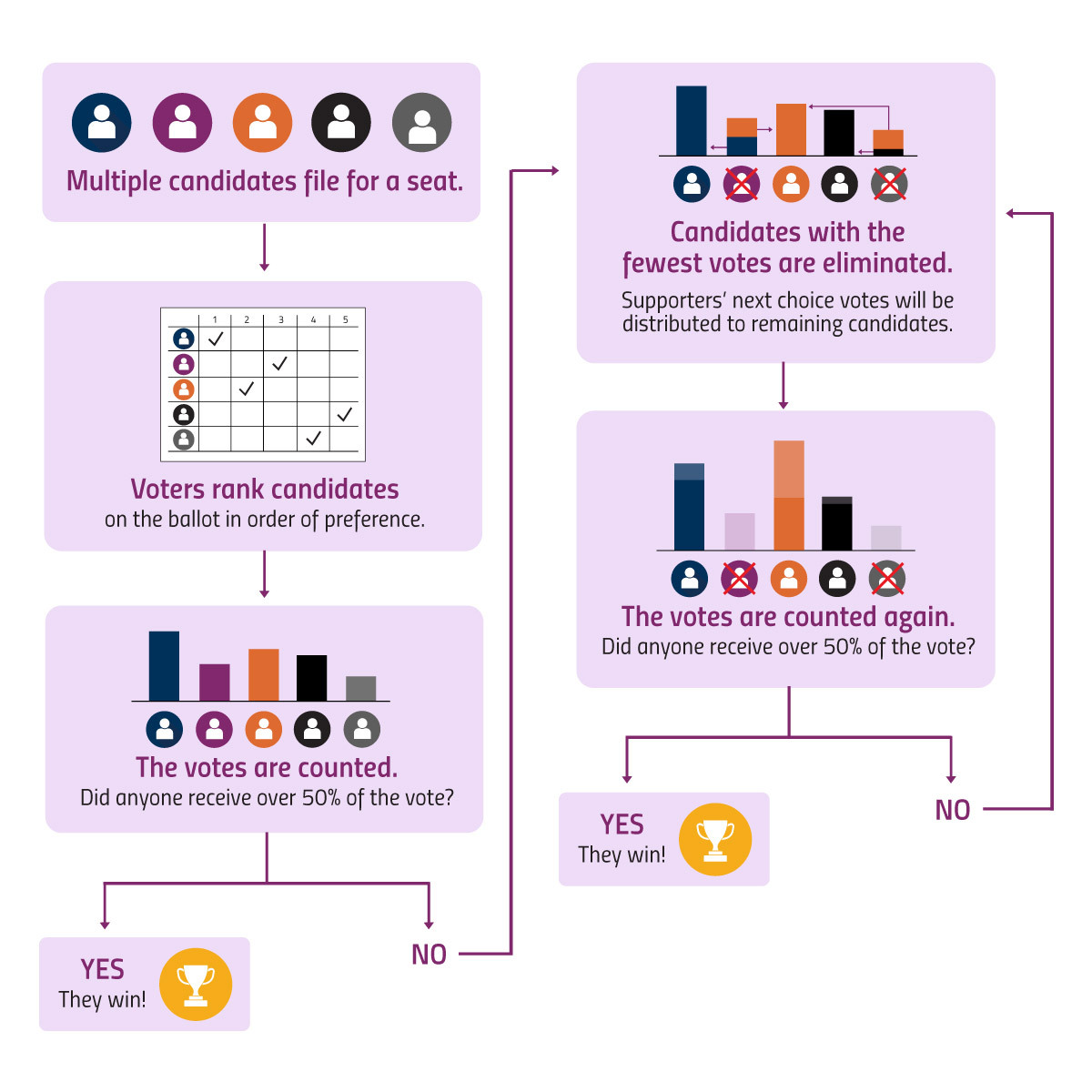
FAQs
-
Isn’t RCV confusing?
Ranking items by preference, inside or outside the voting context, is something we do all the time. Any voter who has completed a ballot with more than one candidate has had to weigh their choices.
Data shows that in places that use RCV, voters understand and like the system. In Alaska, where voters used a statewide RCV system for the first time in 2022, 79% of voters reported RCV to be “simple” and 92% received instructions on how to rank their choices. In Maine, more than 82% of respondents found ranking their choices to be very or somewhat easy.
-
What is the spoiler effect?
When a third-party candidate enters a race, they always run the risk of splitting the vote with the establishment candidate whose politics they most closely align with. If a progressive candidate enters the race, she draws votes away from the Democrat. If a conservative enters, she draws votes away from the Republican. As long as we’re only allowed to choose one candidate on the ballot, the spoiler effect will always be a problem in our elections. It also keeps us trapped in a two-party system with only two choices.
Read more: What is the spoiler effect?
-
How can RCV save taxpayer money?
Elections are expensive. Every year, local and state governments spend hundreds of millions of dollars administering low-turnout runoff elections. Since it’s an instant runoff, Ranked Choice Voting allows voters to rank backup choices, eliminating the need for a separate costly election in places that use runoffs.
For example, if Georgia had instant runoff, its 2022 runoff election for the U.S. Senate would not have been necessary. The state wouldn’t have had to spend tens of millions of taxpayer dollars to hold a lower-turnout election, candidates wouldn’t have had to spend millions more dollars campaigning, and Georgia voters wouldn’t have been subjected to countless attack ads and candidate emails.
-
How would RCV make elections more representative?
RCV gives voters the opportunity to express their true preferences without fear of accidentally helping candidates who they don’t support. Since successful candidates need to win a majority of the vote, they have to go beyond their base and build broader coalitions to govern. RCV also opens the door for more voices in our elections, as candidates no longer have to fear the “spoiler effect”.
-
How does RCV increase accountability?
When voters have the opportunity to better express their preferences, and candidates are incentivized to go beyond a narrow base to connect with the broader community, the officials who win elections need popular buy-in to maintain support. For officeholders, this backing becomes a clearer mandate to govern in exchange for more responsive governance.
-
Where is RCV used in America?
RCV is used by approximately 13 million voters, in 59 cities in over 10 states and statewide in 2 states. This includes places like Alaska, Maine and New York City where RepresentUs has thrown our full support behind the locals leading the way.
-
What are Final Four and Final Five Voting?
Final Four and Final Five Voting (FFV) combine a Ranked Choice Voting general election with a nonpartisan primary election where every voter can participate. The primary advances the four or five candidates with the most votes, regardless of party affiliation, to a general election conducted by Ranked Choice Voting.
A good example of this is Alaska where RepresentUs led the way in bringing both nonpartisan primaries and Ranked Choice Voting for all state federal offices.
-
What is proportional Ranked Choice Voting?
A growing number of cities like Portland, Ore. and Albany, Calif. have adopted a multi-winner, proportional version of RCV.
As a type of proportional representation, proportional RCV leads to elected bodies that more accurately reflect their communities in a way that’s resistant to gerrymandering.
-
After a RCV law has been passed, how do we best implement it and defend it against attacks?
RepresentUs, in partnership with Ranked Choice Voting Resource Center and Democracy Rising, created Protect The Win: An Advocate’s Guide to Implementing Ranked Choice Voting.
This comprehensive guide contains pointers for defending RCV in court and in state legislatures, ways to educate voters and candidates about RCV, case studies of recent high-profile RCV victories, and more. Learn more about the guide.
Our Ranked Choice Voting Campaigns
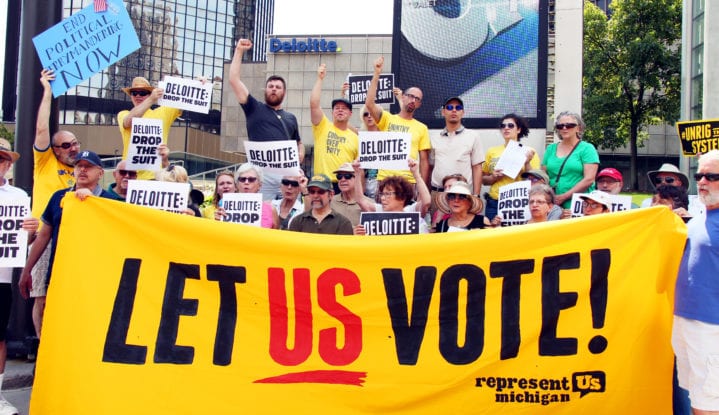
Georgia: Protect Ranked Choice Voting
Mar 29 2024
Protect Ranked Choice Voting

Utah: Protect and Expand Ranked Choice Voting
Dec 15 2023
Protect and Expand Ranked Choice Voting
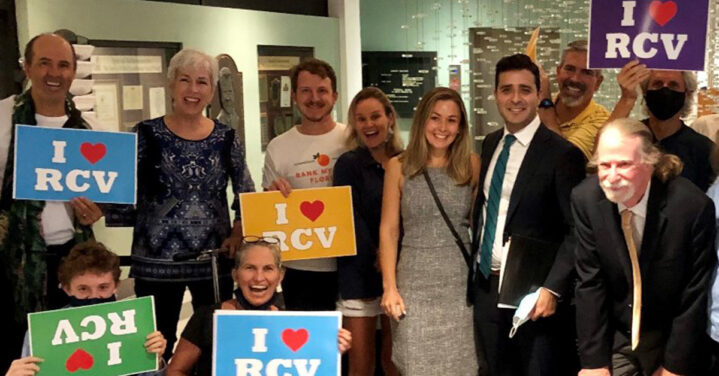
Arizona: Defend Ranked Choice Voting
Dec 15 2023
Defend Ranked Choice Voting
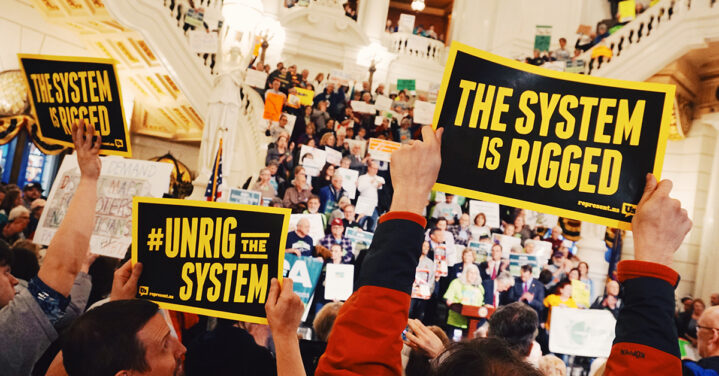
Minnetonka, MN: Defend Ranked Choice Voting
Nov 9 2023
Minnetonka, MN: Defend Ranked Choice Voting

East Lansing, MI: Ranked Choice Voting
Nov 9 2023
East Lansing, MI: Ranked Choice Voting
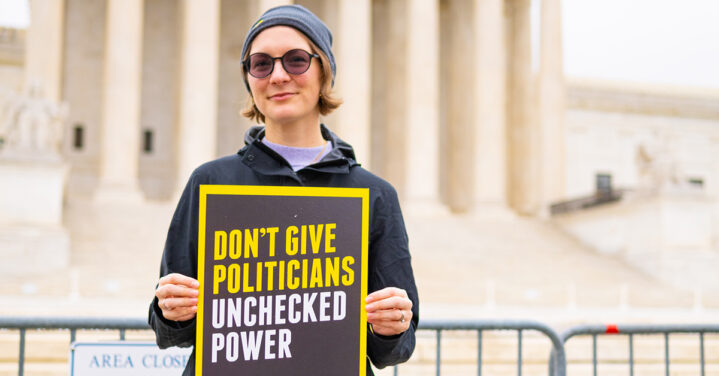
Royal Oaks, MI: Ranked Choice Voting
Nov 9 2023
Royal Oaks, MI: Ranked Choice Voting

Kalamazoo, MI: Ranked Choice Voting
Nov 9 2023
Kalamazoo, MI: Ranked Choice Voting

Arizona: Protect Ranked Choice Voting
Mar 8 2023
Protect Ranked Choice Voting

Measure 26-228: RCV for Portland, OR
Jan 25 2023
Portland will become the largest city in the country to use Proportional Ranked Choice Voting (RCV).
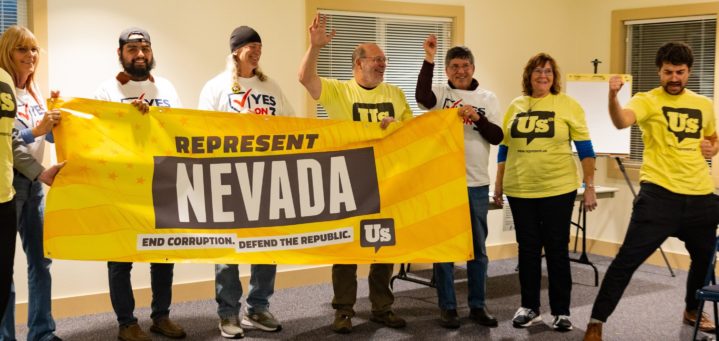
Question 3: Final Five Voting in NV
Jan 25 2023
Nevada is one step closer to adopting an election system that puts voters first!
Get Involved
If you are interested in Ranked Choice Voting, now is the time to get involved. Its popularity is surging and after a string of high profile wins, momentum is on our side.
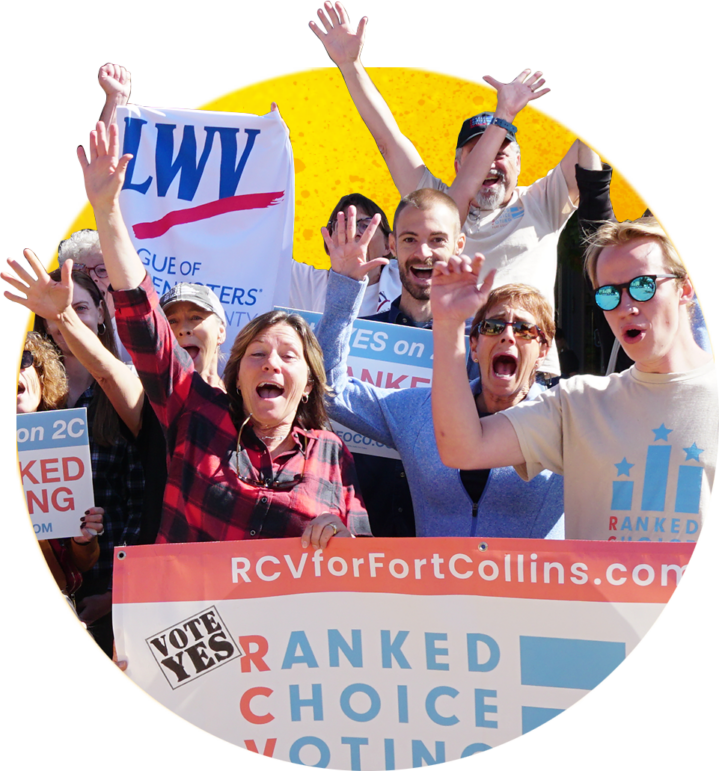
The Latest RCV News & Commentary

Why Aren't There More Political Parties in the U.S.?
Feb 29 2024
Americans want more options, but our election system pushes us toward a duopoly.
Read More
Are the Presidential Primaries Rigged?
Feb 15 2024
Sadly, everything the Biden and Trump campaigns did to alter the primaries was entirely legal.
Read More
Oregon: RCV for Statewide Offices + Local Options
Dec 15 2023
RCV for Statewide Offices + Local Options
Read More